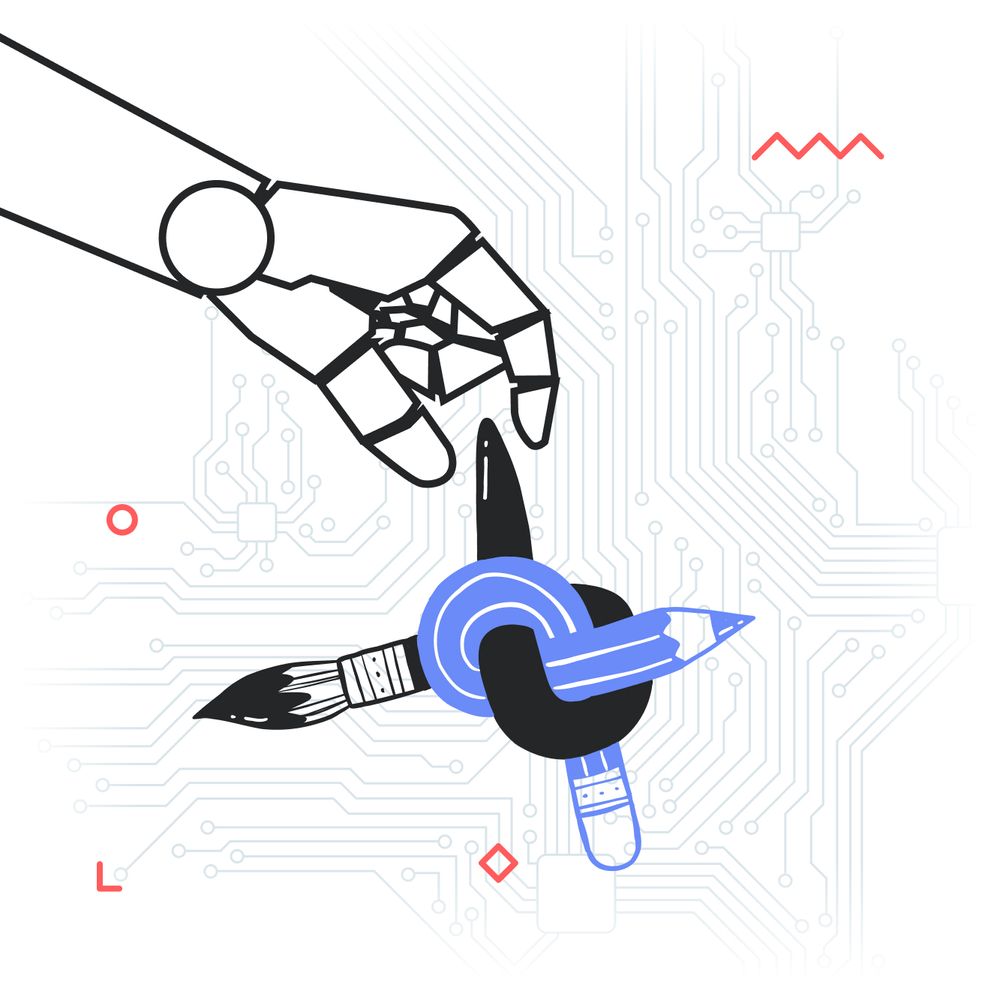Creativity has always been something that has intrigued us humans throughout the centuries. Up until recently, we even believed that animals lacked creativity, something that set us apart through our unique accomplishments. It turns out we humans — or even animals for that matter — don’t have a monopoly on creativity anymore.
With research showing AI being more creative than 90% of humans, the sanctum of creativity is once again challenged. Can AI, a sophisticated synergy of algorithms and machine learning models, rival or even surpass human creativity?
To embark on this exploration, let’s take a moment to understand what creativity is in the first place.
What is Creativity?
Creativity, while intangible, means breaking the mold of conventionality by creating original, visionary, and imaginative ideas, designs, or interpretations. Asked about creativity, Steve Jobs once said it was about “connecting things.” Perhaps we’ve been connecting way too many things over the years. We have research into Neural Networks to thank for that.
Distilled by thought leaders, creativity's essence falls within two dimensions: novelty and utility. The former encapsulates the birth of something unprecedented, while the latter underscores its relevance within a contextual framework.
AI’s Flourishing Creative Endeavors
The creative forays of AI are not to be ignored, especially for those working in creative industries. Whether it's composing symphonies, crafting visual masterpieces, penning poetic verses, envisioning architectural marvels, or culinary innovations, AI is venturing beyond its traditional algorithmic confines.
Further examples include the auctioning of AI-generated art at esteemed venues like Christie's or the selling of “fake” books that are sold on Amazon, written by ChatGPT-3 under other authors.
AI-powered video tools can craft visuals from textual descriptions, producing engaging and interactive content for entertainment and educational purposes.
Within the creative realm of software development, code autocomplete features can be enhanced with the use of AI. This can accelerate the development process and even elevate code quality. Additionally, AI aids in identifying bugs, suggesting fixes, and even crafting custom code snippets based on individual user needs. But, does this technological mimicry truly mirror the essence of human creativity?
Contrasting AI and Human Creative Landscapes
AI’s accomplishments in creativity are undeniably commendable, yet stark differences delineate its approach from human creativity:
Emotive Depth
Central to human creativity is the realm of conscious experience and emotional introspection. The subtleties of an artist's personal connection to nature or the depth of their emotions remain abstracted from AI. To put it simply, AI has no emotions.
Domain Fluidity
While AI’s prowess is based on its trained domains, human creativity thrives on interdisciplinary synergies. Drawing parallels across unrelated domains is a hallmark of human ingenuity.
Human Provenance
The AI’s creative reservoir is predicated upon human-curated data. Its output is, in many ways, a reflection of human creativity, refracted through algorithms.
Value Perception
AI's creative output, albeit highly intricate and complex, lacks an innate understanding of its intrinsic value or emotional resonance.
AI and Creativity: The Current Verdict
AI's "creative" capacities, though profound, are not the same as human creativity.
While AI can indeed emulate, assist, and even push the envelope in certain creative aspects, it remains, for now, a tool, and just a tool — powerful yet devoid of the subjective consciousness and intricate emotional tapestry intrinsic to human creativity.
Nonetheless, the trajectory of AI's evolution in the creative realm will be exciting to witness. Until AI can perceive sunsets, be filled with emotion from hearing a song, or be creative beyond its algorithmic paradigms, human creativity will reign supreme 🦾

